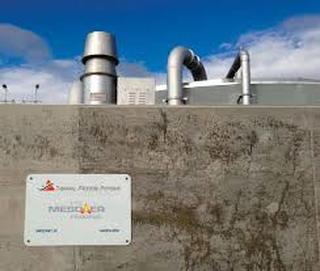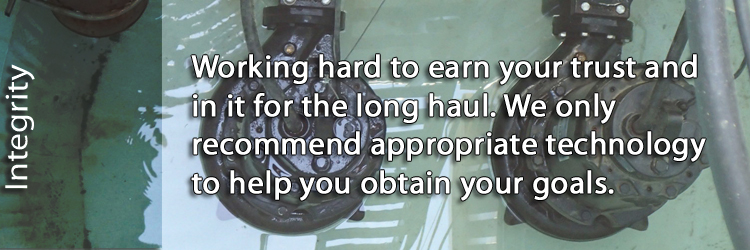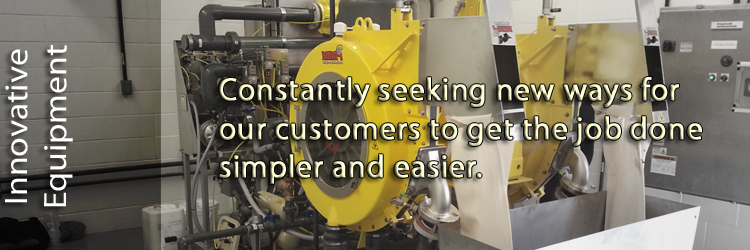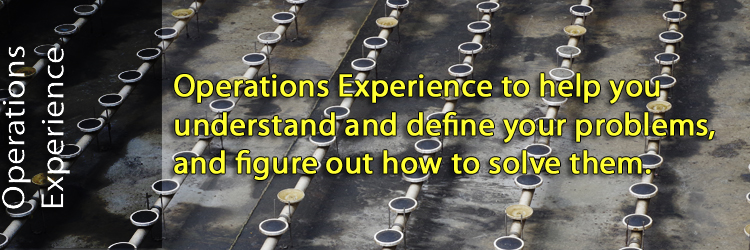
Thermal Process Systems, Inc. - SNDR (Storage Nitrification Denitrification Reactor)
Storage Nitrification Denitrification Reactor.
The importance of producing a high-quality cake and reducing recycle constituents cannot be overstated. With the advent of Storage Nitrification Denitrification Reactor (SNDR), thermophilic sludges can be dewatered more economically, producing a very high-quality end product. Mesophilic conditioning - as provided in the SNDR, prior to dewatering reduces the soluble COD fraction in the digested biosolids. The SNDR provides optimum temperature, pH, alkalinity and aeration conditions for nitrification and denitrification of digested biosolids. The SNDR improves dewaterability, cake quality and reduces recycle concentrations.
Nitrification and denitrification are controlled in the SNDR by monitoring the pH, temperature, and ORP. Since nitrification is inhibited at temperatures above ~100° F, this reactor is operated just under this temperature, in order to fully optimize the growth rate of these specialized microorganisms. pH set points can be used to control the nitrification and denitrification process by creating an aerobic or anoxic condition as warranted. Because a reduction of total alkalinity accompanies nitrification, the pH of the system provides an ideal method of control.
SNDR Advantages:
Lower Conditioning Costs Reduction in soluble COD, ammonium, and VFAs in the SNDR significantly reduces the chemical demand for dewatering operations.
Lower Nutrient Recycle Nitrification and denitrification in the SNDR greatly reduce the ammonium concentration in the recycle streams.
Single Reactor System Nitrification and denitrification is carried out in a single tank.
No External Alkalinity Required CO2 released during ThermAer™ digestion generates carbonate and bi-carbonate alkalinity. When transferred to the SNDR, this alkalinity is utilized for nitrification; therefore, eliminating the requirement for an external alkalinity source.
Simple Control Strategy A control strategy based on ORP, temperature and pH controls the overall process in SNDR.
Lower Disposal Costs SNDR provides an additional 10-15% VS reduction in addition to already high VS destruction in ThermAer. The SNDR further reduces the volume of biosolids to be hauled from the facility.
Full Automation Automation includes automatic waste, feed, aeration, nitrification and denitrification. The system can be operated with minimal assistance.
Storage Nitrification Denitrification Reactor.
The importance of producing a high-quality cake and reducing recycle constituents cannot be overstated. With the advent of Storage Nitrification Denitrification Reactor (SNDR), thermophilic sludges can be dewatered more economically, producing a very high-quality end product. Mesophilic conditioning - as provided in the SNDR, prior to dewatering reduces the soluble COD fraction in the digested biosolids. The SNDR provides optimum temperature, pH, alkalinity and aeration conditions for nitrification and denitrification of digested biosolids. The SNDR improves dewaterability, cake quality and reduces recycle concentrations.
Nitrification and denitrification are controlled in the SNDR by monitoring the pH, temperature, and ORP. Since nitrification is inhibited at temperatures above ~100° F, this reactor is operated just under this temperature, in order to fully optimize the growth rate of these specialized microorganisms. pH set points can be used to control the nitrification and denitrification process by creating an aerobic or anoxic condition as warranted. Because a reduction of total alkalinity accompanies nitrification, the pH of the system provides an ideal method of control.
SNDR Advantages:
Lower Conditioning Costs Reduction in soluble COD, ammonium, and VFAs in the SNDR significantly reduces the chemical demand for dewatering operations.
Lower Nutrient Recycle Nitrification and denitrification in the SNDR greatly reduce the ammonium concentration in the recycle streams.
Single Reactor System Nitrification and denitrification is carried out in a single tank.
No External Alkalinity Required CO2 released during ThermAer™ digestion generates carbonate and bi-carbonate alkalinity. When transferred to the SNDR, this alkalinity is utilized for nitrification; therefore, eliminating the requirement for an external alkalinity source.
Simple Control Strategy A control strategy based on ORP, temperature and pH controls the overall process in SNDR.
Lower Disposal Costs SNDR provides an additional 10-15% VS reduction in addition to already high VS destruction in ThermAer. The SNDR further reduces the volume of biosolids to be hauled from the facility.
Full Automation Automation includes automatic waste, feed, aeration, nitrification and denitrification. The system can be operated with minimal assistance.






